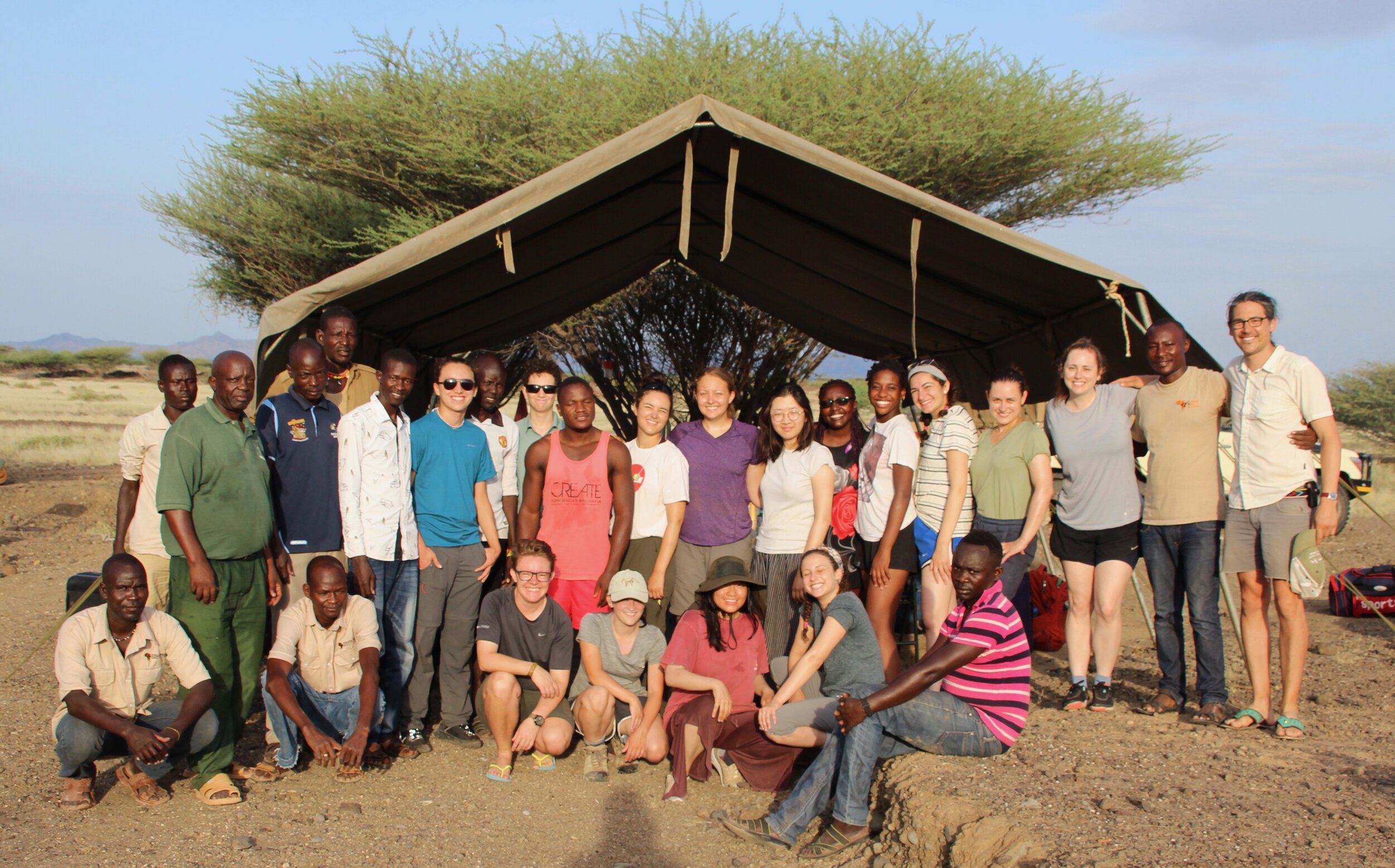
Teaching
Courses
Humans and Climate: How Did We Get Here and Where Are We Going?
How did we get here? Climate influenced human evolution over the past ~6 million years. In this course, students will learn the basics of how the Earth’s climate system works and how past climate and ecosystem fluctuations posed challenges to early humans. Moving forward to more recent times, we will look at how climate influenced the rise and fall of early civilizations. Since the Industrial Revolution, humans have exerted a strong influence on climate, which raises the question, where are we going? The course will end with a focus on the impacts of current and future climate change on humans and other species on earth.
Lab manager John Gitonga explains cryogenic extraction of water from plant and soil samples to undergraduate students in the Tropical Biology and Sustainability in Kenya Program. Extracted waters are analyzed for stable isotope ratios using a Picarro analyzer in the PERMILab at Mpala.
New Course coming in 2026!
UPDATE: THE FEDERAL GOVERNMENT CANCELLED MY NSF-CAREER GRANT IN MAY, 2025. THE CAREER GRANT PROVIDED FUNDS FOR THIS NEW COURSE AS PART OF MY BROADER IMPACTS. AS A RESULT, THIS COURSE WILL LIKELY BE CANCELLED.
I will teach a three-week course in Kenya for US and International graduate students, postdocs, and early career faculty. Students from African nations are encouraged to apply. The first course is planned to run in the summer of 2026. Half of the course will be held at Mpala Research Centre in Laikipia, where we will focus on modern stable isotope ecology and vertebrate taphonomy. For the second half of the course, we will travel to the Turkana Basin, the cradle of humankind, where we will focus on fossils and geologic processes. In Turkana, we will stay at the Turkana Basin Institute -Turkwel Stay tuned for more details!
Students in Terrestrial Paleoecology (EEEB OC3928) documenting carnivore damage on an elephant limb bone at Mpala.
Terrestrial Paleoecology (EEEB OC3928; off campus)
Course Overview: Terrestrial paleoecology is the study of climate, vegetation and animals and their interactions in ancient ecosystems. The terrestrial paleoecology of eastern Africa is significant because it can shed light on the potential role that climate played in human and mammalian evolution. This course aims to teach students the principles of paleoecology primarily through fieldwork, lab work, and research projects. In the first part of the course, students will be introduced to basic methods in the modern Mpala ecosystem. In the second, they will explore the rich record of human and mammalian evolution in the Turkana Basin. Students will study bones, teeth, plants, or soils to reconstruct modern and ancient ecosystems.
Photos from past Terrestrial Paleoecology Courses are below.










Life Systems (EESC UN2300; 2018)
I taught the Earth History portion of this course in 2018 as a sabbatical replacement for Paul Olsen, who designed that part of the course. The course objective is to study the role of life in biogeochemical cycles, the evolution of life over long and short timescales, the dynamics of populations, communities, and ecosystems and their vulnerability to environmental change, and the causes and effects of extinctions through geologic time.
Hominin taxonomy, vegetation proxies and hominin diet records compiled by Peter deMenocal (Scientific American, 2014).
Environmental Change and Human Evolution (Columbia University; 2015)
This was a graduate level seminar I co-taught with Andrew Cohen (University of Arizona) and Peter deMenocal (WHOI) that explored the relationship between climate and human evolution.
Course Overview: For over a century geologists and anthropologists have speculated on the role environmental history (and in particular paleoclimate) may have had in influencing the evolution of hominins (humans, our close relatives and ancestors). Hypotheses linking climate change with human evolution have multiplied in recent years with both the explosion of new and detailed paleoenvironmental records (from outcrops and drill cores from lake beds and the ocean), numerous, exciting new fossil and archaeological finds and explanatory models developed to understand climate dynamics in regions where hominins evolved. This seminar is intended to review this exciting and rapidly developing field. We will review and critique recent papers on topics such as models linking environmental forcing to evolutionary change (in mammalian evolution with emphasis on hominins, the correlation of long climate records from Africa and Eurasia with human evolution, the role new proxy and indicator records have played in influencing our thinking about human evolution, the evolution of bipedalism and encephalization and their possible links to environmental change, and Out-of-Africa hypotheses.
Other Courses Taught:
June 2010- 2012. Lab Instructor for Stable Isotopes in Ecology (University of Utah)
Fall 2009. Introduction to Geology (Carleton College)
Spring 2008. Earthquakes and Volcanoes (University of Utah)




